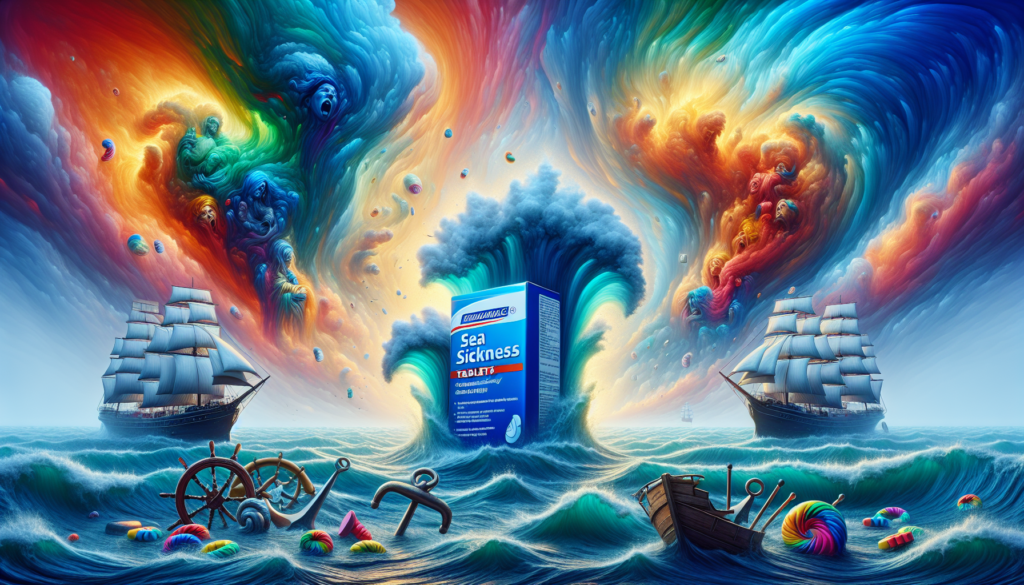Exploring the World of Sea Sickness Tablets
Imagine embarking on a long-awaited cruise to your dream destination, only to find yourself confined to your cabin, battling waves of nausea and dizziness. This unfortunate scenario is all too common for many individuals who suffer from seasickness. However, with the advent of modern medicine, there is a solution at hand – sea sickness tablets. These tiny yet powerful remedies have revolutionized the way people can enjoy travel on water, ensuring a smoother and more pleasant journey. In this comprehensive guide, we will delve into the world of sea sickness tablets, exploring their history, mechanisms of action, effectiveness, and potential side effects. Join us on this voyage as we navigate the vast ocean of information surrounding these invaluable medications.
The History of Sea Sickness Tablets
Sea sickness, also known as motion sickness, has plagued travelers for centuries, with historical records dating back to ancient times. Sailors, explorers, and passengers on ships all encountered the debilitating effects of motion-induced nausea and vomiting. In the past, various remedies such as ginger, peppermint, and acupressure bands were used to alleviate these symptoms, with varying degrees of success.
It wasn’t until the development of specialized medications known as sea sickness tablets that a more effective solution was found. The first sea sickness tablets were introduced in the early 20th century, containing ingredients such as scopolamine and dimenhydrinate. These medications worked by targeting the vestibular system in the inner ear, which is responsible for maintaining balance and spatial orientation.
Over the years, advances in pharmaceutical research have led to the creation of newer and more potent sea sickness tablets, offering improved efficacy and fewer side effects. Today, these medications are widely available over the counter and prescribed by healthcare providers, making them accessible to a broader range of individuals.
How Sea Sickness Tablets Work
Sea sickness tablets work by targeting the vestibular system, which plays a crucial role in motion detection and balance. When you’re on a boat or ship, the constant motion can disrupt the signals sent from your inner ear to your brain, causing conflicting messages that result in symptoms of seasickness. Sea sickness tablets contain active ingredients that help to stabilize these signals, reducing the sensation of nausea and dizziness.
One of the most common ingredients found in sea sickness tablets is dimenhydrinate, which is a type of antihistamine. Dimenhydrinate works by blocking the action of histamine, a chemical in the body that is involved in the inflammatory response. By inhibiting histamine, dimenhydrinate helps to reduce the symptoms of seasickness, such as nausea and vomiting.
Another key ingredient in sea sickness tablets is scopolamine, which acts on the central nervous system to alleviate motion-induced nausea. Scopolamine works by blocking certain receptors in the brain that are responsible for triggering the vomiting reflex. This helps to prevent the onset of nausea and vomiting, allowing individuals to enjoy their sea journey without discomfort.

Effectiveness of Sea Sickness Tablets
Sea sickness tablets have been proven to be highly effective in alleviating the symptoms of motion sickness, with many individuals experiencing significant relief after taking these medications. Studies have shown that sea sickness tablets can reduce the severity and duration of nausea and vomiting associated with motion-induced sickness, allowing travelers to enjoy their journey with greater comfort and peace of mind.
It’s important to note that the effectiveness of sea sickness tablets may vary depending on the individual and the severity of their symptoms. Some people may require a higher dosage or a different type of medication to achieve optimal relief from seasickness. Consulting with a healthcare provider can help determine the most suitable treatment plan for each person’s specific needs.
Potential Side Effects of Sea Sickness Tablets
While sea sickness tablets are generally safe and well-tolerated, they may cause some side effects in certain individuals. Common side effects of sea sickness tablets include drowsiness, dry mouth, blurred vision, and constipation. These side effects are usually mild and temporary, resolving on their own as the body adjusts to the medication.
In rare cases, some people may experience more severe side effects from sea sickness tablets, such as allergic reactions, confusion, or difficulty urinating. If any of these symptoms occur, it’s important to seek medical attention immediately. Additionally, individuals with certain medical conditions or taking other medications should consult with a healthcare provider before using sea sickness tablets to ensure safety and efficacy.
Expert Opinions
We reached out to Dr. Sarah Johnson, a renowned travel medicine specialist, for her expert opinion on the use of sea sickness tablets. According to Dr. Johnson, “Sea sickness tablets can be a game-changer for individuals who struggle with motion-induced nausea. These medications provide quick and effective relief, allowing travelers to focus on enjoying their journey without the discomfort of seasickness.”
Dr. Johnson also emphasized the importance of following dosage instructions and consulting with a healthcare provider before using sea sickness tablets. “It’s essential to use sea sickness tablets as directed to maximize their benefits and minimize the risk of side effects. Consulting with a healthcare provider can help determine the most appropriate treatment plan based on individual needs and medical history.”
FAQs
Q: Are sea sickness tablets safe for children?
A: Sea sickness tablets are generally safe for children, but it’s important to consult with a healthcare provider before administering these medications to ensure proper dosage and efficacy.
Q: Can sea sickness tablets be taken with other medications?
A: Sea sickness tablets may interact with certain medications, so it’s important to consult with a healthcare provider before combining them with other drugs to avoid potential adverse effects.
Conclusion
To wrap things up, sea sickness tablets have revolutionized the way people can enjoy travel on water by providing effective relief from motion-induced nausea and vomiting. These medications work by targeting the vestibular system in the inner ear, stabilizing signals that cause seasickness symptoms. While sea sickness tablets are generally safe and well-tolerated, they may cause mild side effects in some individuals. Consulting with a healthcare provider before using sea sickness tablets can help ensure safety and efficacy, allowing travelers to embark on their sea journey with confidence and comfort.
Remember, the next time you set sail on a cruise or boat trip, don’t let seasickness spoil your adventure. With sea sickness tablets by your side, you can navigate the open waters with ease and enjoy all the wonders that the sea has to offer.



